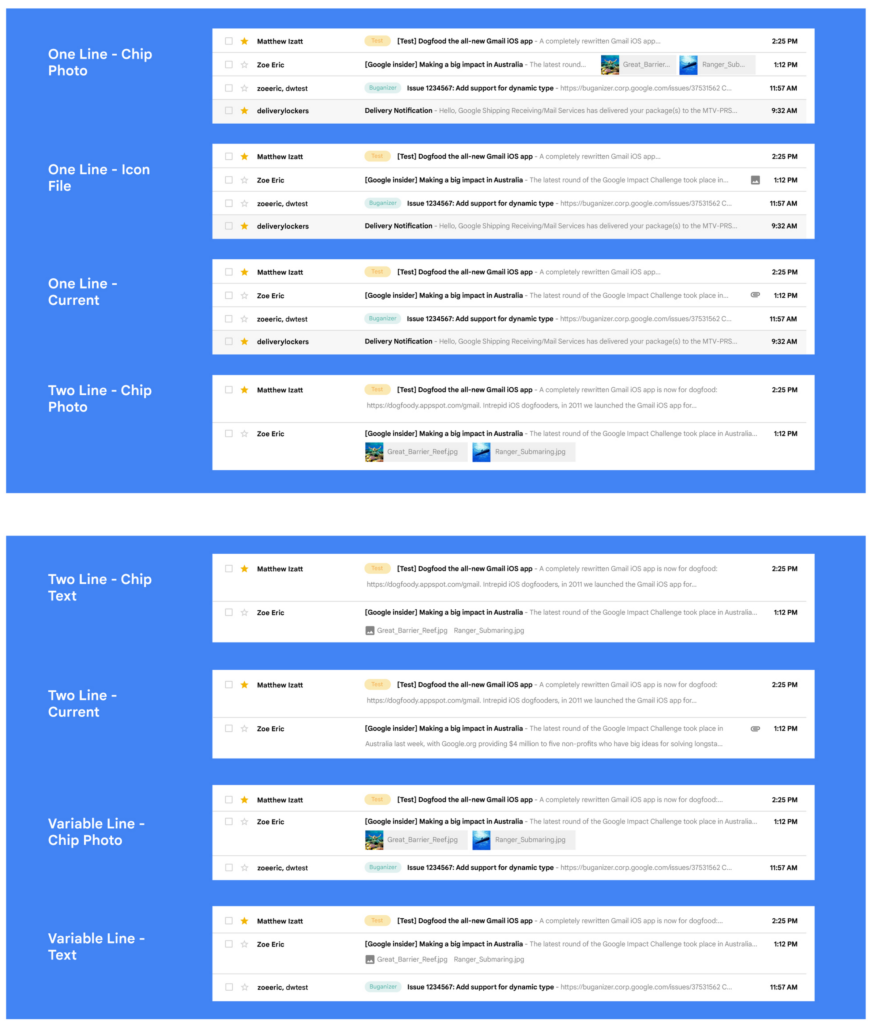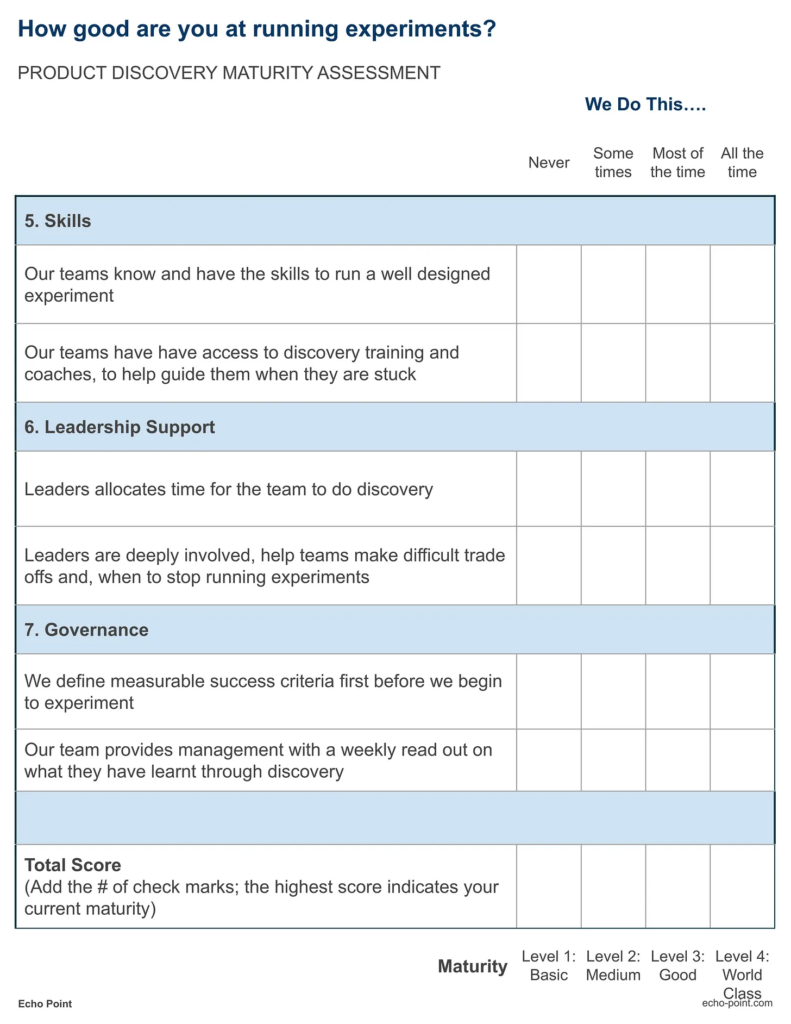The best product companies discover great products.
Contrary to popular belief. Product teams at Google, Amazon, Apple, Meta etc. don’t come up with a cool product idea out of thin air and then build it.
Instead, they discover it.
They start with a user problem, experiment potential solutions, gather customer feedback, and continuously iterate. It is this process that helps them (eventually) discover the right solution.
For example, Google uses discovery to find out the right user experience for Gmail.
When Gmail team wanted to update a critical user experience – the thread list (list of all your emails).
They ran experiments.
They came up with 100 different solutions, mocked up 8 prototypes, gathered user feedback, and settled on 1 solution. See prototype examples below.

Product discovery is Google’s (and the rest of silicon valley’s giants) true super power. This is why Gmail continues to deliver great experiences even after 18 years.
What about you? How good are you at product discovery?
Take a look at the questions below. And for every question, ask yourself if you do it “all the time”, “most of the time”, “some of the time”, or “never”.
Each question is a best practice. If you would like to keep a running tally, you can download the full assessment here.
1. Objectives
- We run product discovery (experiments) to test our riskiest assumptions / solution critical user journeys only
- We run discovery to validate the right solution, technical feasibility, and business viability
2. Approach
- We have a well defined discovery process, framework, and artifacts
- We build products only after discovery is completed
3. Velocity
- Our teams can run 10 -15 iterations within a span of a few weeks, discovery is high velocity
- We use agile best practices to run discovery
4. Structure
- The core team (product, UX, engineering manager) runs and actively participates in discovery
- Our teams have autonomy on how they choose to experiment
5. Skills
- Our teams know and have the skills to run a well designed experiment
- Our teams have have access to discovery training and coaches, to help guide them when they are stuck
6. Leadership Support
- Leaders allocates time for the team to do discovery
- Leaders are deeply involved, help teams make difficult trade offs and, when to stop running experiments
7. Governance
- We define measurable success criteria first before we begin to experiment
- Our team provides management with a weekly read out on what they have learnt through discovery
You can download the full assessment here.


The best product companies rank between level 3 and 4. Where did you rank?
Tally up the number of times you marked “all the time”, “most of the time”, “some of the time”, or “never”.
The highest score indicates the level of your maturity,
Level 4: World class – if most of your responses were “all the time”
Level 3: Good – If majority of your responses were “most of the time”
Level 2: Medium – if majority of your responses were “some of the time”
Level 1: Basic – If most of your responses were “never”
What to do next…
Well that depends on the output of your assessment.
If you are at maturity level 4 or 3. Kudos to you. You are in the top 10 to 20% of product organizations.
If however you are (like most of our clients) at level 1 or 2. And you want to get better at experiments. Then you have your work cut out for you.
Consider a transformation path that includes a mix of upskilling and coaching. As well as making changes to the process, team structure, and operating model.
In my experience, a tops down + bottom up transformation approach works best. To learn more, check out this article. The 4 steps outlined there applies here as well.
It’s a lot of work. But that is where the fun begins.
Happy building!!

